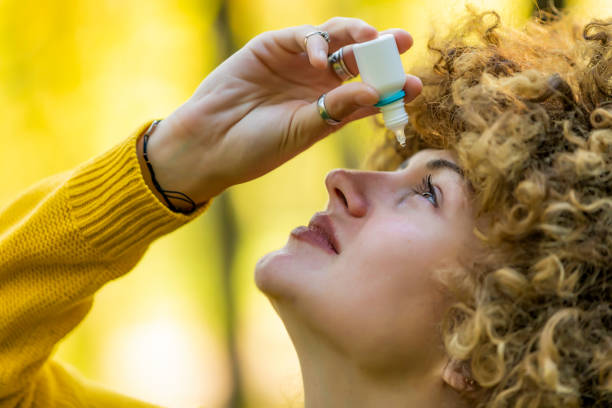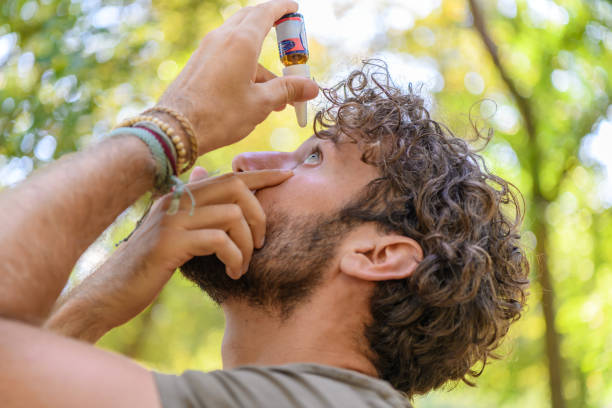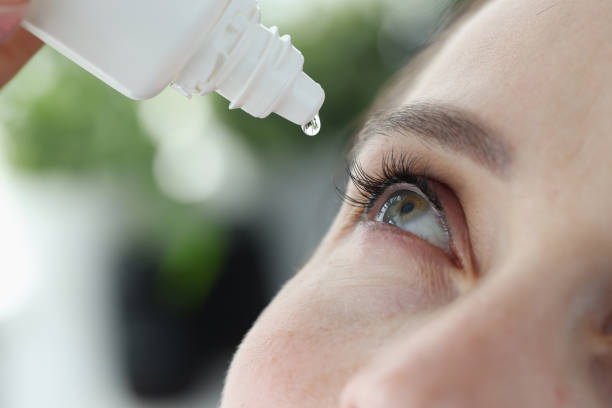Using eye drops might seem easy, but using them the right way can greatly improve your eye health. Whether you’re dealing with dry eyes, allergies, redness, or an infection, proper use helps the medicine work better and protects your eyes from harm.
In this simple guide, you’ll learn how to use eye drops safely and effectively. We’ll also share helpful tips to avoid common mistakes and make sure you get the full benefit of your treatment.
Why Proper Use of Eye Drops Matters
Using eye drops the right way is important for keeping your eyes healthy and getting the best results from your treatment. When used correctly, eye drops can:
- Deliver the correct dose of medicine
- Prevent germs from getting into the bottle
- Lower the risk of side effects
- Make your eyes feel more comfortable
- Help your eyes heal faster
On the other hand, using eye drops the wrong way can cause problems. You might waste the drops, spread infection, or irritate your eyes. The good news is that with just a few easy steps, you can avoid these issues and take better care of your eyes.
Different Types of Eye Drops
Before you use any eye drops, it’s important to know which type you have. Each kind is made for a specific purpose. Using the right one can help you feel better faster and protect your eyes.
Lubricating Eye Drops (Artificial Tears)
These drops help treat dry eyes. They add moisture to the surface of the eyes and ease burning, stinging, or irritation.
Allergy Eye Drops
These are used to relieve symptoms like itching, redness, and watery eyes caused by allergies such as pollen, dust, or pet dander.
Prescription Eye Drops
Given by your eye doctor, these drops may treat infections, glaucoma, inflammation, or other eye conditions. Always use them exactly as prescribed.
Redness-Relieving Drops
These drops make the blood vessels in your eyes smaller to reduce redness. They should only be used for a short time, as overuse can make redness worse.
Tip: Always check the label or ask your doctor to make sure you’re using the right kind of eye drops for your needs.

How to Use Eye Drops Correctly
Follow these simple steps to make sure your eye drops are safe and effective:
Step 1: Wash Your Hands
Clean hands are the first step to keeping your eyes healthy. Wash with soap and warm water, then dry your hands with a clean towel or tissue to prevent germs from spreading.
Step 2: Shake the Bottle (if needed)
Some eye drops need to be shaken before use to mix the ingredients evenly. Always check the label or ask your pharmacist to be sure.
Step 3: Tilt Your Head Back
Sit comfortably or lie down. Tilt your head back and look up at the ceiling. This makes it easier to apply the drops and helps keep them from running out too soon.
Step 4: Gently Pull Down the Lower Eyelid
Use one finger to gently pull down your lower eyelid. This creates a small pocket where the eye drop will go.
Step 5: Hold the Bottle Close (But Don’t Touch)
Hold the dropper about one inch above your eye. Be careful not to let it touch your eye, eyelid, or lashes to avoid contamination.
Step 6: Apply One Drop
Squeeze one drop into the pocket you made with your lower lid. One drop is usually enough. Using more may cause overflow and waste the medicine.
Step 7: Close Your Eye and Press the Corner
Close your eye gently (don’t squeeze). Then use your finger to press the inner corner of your eye (near your nose) for about one minute. This helps keep the drop from draining away too quickly.
Step 8: Wait Before Using More Drops
If you need to use another drop or a different type of eye drop, wait at least 5 to 10 minutes. This gives each drop time to work and prevents them from washing each other out.
Tips for Safe Eye Drop Use
To get the best results and keep your eyes safe, follow these helpful tips:
- Check the expiration date before using any eye drops. Expired drops might not be effective, and they could potentially harm your eyes. Always make sure your drops are within their use period.
- Store eye drops properly to maintain their effectiveness. Some types need to be kept in the fridge, while others should be stored at room temperature. Always read the label for proper storage instructions.
- Use a mirror if you have trouble applying the drops. A mirror can make it easier to aim the dropper and apply the medication without missing your eye.
- Ask for help if you find it difficult to apply drops on your own. A family member or friend can assist to ensure the drops are applied correctly.
- Use separate bottles if you’re treating both eyes and one is infected. This helps prevent cross-contamination and spreading infection from one eye to the other.
- Don’t share eye drops with anyone else. Sharing can spread infections and introduce bacteria to the bottle, which can harm your eyes or theirs.

What to Avoid When Using Eye Drops
To protect your eyes and get the best results, make sure to avoid these common mistakes:
- Touching the dropper tip to your eye, hands, or any surface. Doing this can introduce germs and cause contamination. Always keep the dropper clean and avoid contact with anything.
- Using eye drops with contact lenses unless the product is specifically designed for them. Some drops are not safe for use with contacts and can cause discomfort or damage. Always check the label to see if the drops are contact lens-friendly.
- Overusing eye drops, especially redness-relieving drops. While these can provide quick relief, using them too often can worsen the redness over time or lead to rebound effects, where your eyes get even redder once the drops wear off.
- Skipping doses if you’re using prescription eye drops. If your doctor has prescribed eye drops, it’s important to stay on schedule. Missing doses or stopping too soon can reduce the effectiveness of your treatment and slow recovery.
Using Eye Drops with Contact Lenses
If you wear contact lenses, it’s important to follow these guidelines for safe and effective use of eye drops:
- Remove your lenses before using eye drops. This is important unless the label specifically states that the drops are safe to use while wearing contact lenses. Removing your lenses helps prevent irritation and ensures the drops can work properly.
- Wait 15–20 minutes before reinserting your contact lenses. This allows the eye drops to absorb and helps prevent the drops from being trapped under your lenses, which can cause discomfort.
- Use preservative-free drops if you need to apply eye drops frequently while wearing contacts. Some eye drops contain preservatives that can build up on your lenses and cause irritation or discomfort. Preservative-free options are gentler on your eyes and lenses.
For more detailed information on using eye drops with contact lenses, check out this helpful guide from the American Academy of Ophthalmology.
How to Help Kids or Seniors Use Eye Drops
Helping someone else, whether it’s a child or a senior, use eye drops can be challenging. Here are some tips to make the process easier and more comfortable for both of you:
If someone can’t do it themselves, ask a caregiver or doctor for help. If the person is unable to apply the drops on their own, don’t hesitate to ask a caregiver or healthcare provider for assistance.
Explain the process calmly and clearly. Let them know what to expect and how the drops will help, so they feel more at ease.
Use rewards or distractions for kids. If you’re helping a child, try using a fun distraction, like playing a favorite song or offering a small reward afterward. This can make the experience less stressful.
Lay the person down for better control. For added comfort and control, have them lie down or tilt their head back. This gives you better access to apply the drops without causing unnecessary movement.
Gently hold the eyelids open, but never force them. Use a soft touch to hold the eyelids open to avoid discomfort. Be gentle and never force the eye open, as this can cause stress and make the process harder.
Be patient and take breaks if needed. If they’re nervous or uncomfortable, take it slow. You can always pause and try again after a short break.
Signs You’re Using Eye Drops the Wrong Way
Watch for these warning signs:
- Eyes feel worse, not better
- Stinging or burning that lasts more than a few seconds
- Blurred vision that doesn’t go away
- Redness or swelling
If you notice any of these, stop using the drops and contact your eye doctor.
When to See an Eye Doctor
Eye drops are helpful, but they’re not a cure-all. See your eye doctor if:
- Symptoms last more than a few days
- Vision changes suddenly
- You have eye pain or swelling
- You think you have an eye infection
- You’re unsure which drops to use
Regular eye exams are also key to keeping your eyes healthy. Learn more from the National Eye Institute.

Safe Storage and Disposal of Eye Drops
To keep your eye drops safe:
- Store in a cool, dry place unless otherwise directed
- Keep out of reach of children
- Don’t use if the color changes or the bottle looks damaged
- Dispose of expired or unused drops safely. Many pharmacies offer medicine take-back programs.
Final Thoughts
Eye drops can be a simple way to treat eye issues and support daily eye health—but only if used the right way. Following the correct steps helps you get the full benefit and avoid problems like infection or irritation.
Remember:
- Wash your hands
- Don’t touch the dropper
- Apply only one drop
- Wait between different drops
- Follow all instructions carefully
Take Action for Better Eye Health
Now that you know how to use eye drops safely and effectively, it’s time to put it into practice!
- Double-check your technique
- Replace any expired drops
- Schedule your next eye exam
- Share this post with a friend who wears eye drops
Got any questions or tips about using eye drops? Leave a comment below—we’d love to hear from you!

